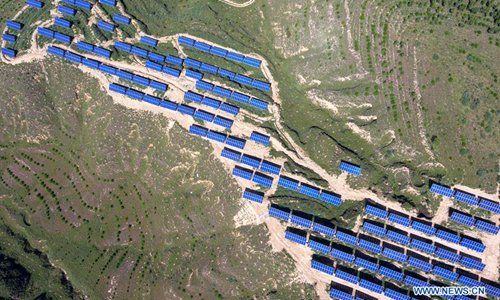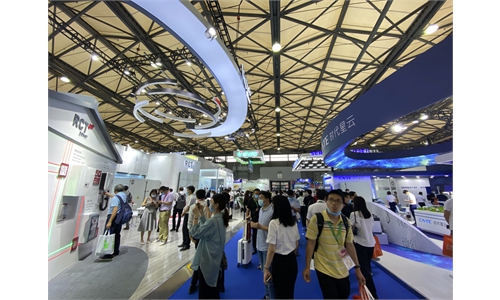
Aerial photo taken on Sept. 4, 2018 shows a photovoltaic power plant in Loufan County, Taiyuan City, north China's Shanxi Province. In recent years, the county has vigorously developed and utilized solar energy by building photovoltaic power plants on barren mountains. (Xinhua/Cao Yang)
A research team comprised of Chinese and Russian scientists have recently developed a cost-effective and environmentally friendly way to lift efficiency to convert sunlight into hydrogen energy, a method that could help Russia and China enter a new era of clean energy and help both countries take a leading position in the industry.
Scientists from Russia's national research-oriented Tomsk Polytechnic University (TPU), China's Shihezi University, and China's Wuhan University of Geosciences say they have found an inexpensive and environmentally friendly way to treat a popular photocatalyst material.
The findings were published in the scientific journal Applied Catalysis B-environmental.
Scientists said that they have found a method to change the microstructure of carbon nitride (an important photocatalytic material) by treating carbon nitride with water at high temperature to form porous nanolayers of oxygen-containing molecules.
Raul Rodriguez, a professor from Tomsk Polytechnic University's Research Faculty of Chemistry and Biomedical Technology said that Carbon nitride is a promising and inexpensive material that can be easily synthesized from urea or other nitrogen-carbon compounds by high-temperature reactions.
“After steam and high-temperature treatments the material will have better performance in generating hydrogen from sunlight,” he said.
China-Russia energy cooperation is quickly becoming one of the biggest areas of bilateral cooperation.
China-Russia bilateral trade in 2021 grew 35.9 percent year-on-year, reaching $146.8 billion, exceeding the threshold of $140 billion for the first time, an all-time high, official data showed. The two nations have set a goal of reaching $200 billion in bilateral trade by 2024.
Global Times

